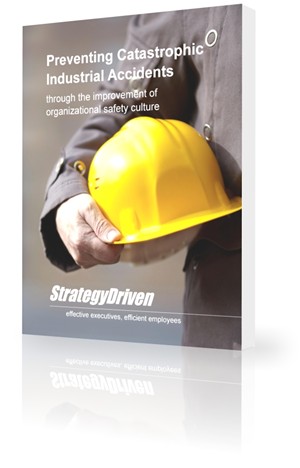The Big Picture of Business – Achieving the Best by Preparing for the Worst: Lessons Learned from High-Profile Crises, part 2 of 4
Wrong Actions, Mis-Actions
Ford Motor Company and the Firestone Tire Company had partnered and collaborated for almost 100 years, stemming from ties of their founders. In the 1980s, Bridgestone Tire Company purchased Firestone.
In the 1990s, another international conglomerate purchased Bridgestone-Firestone. Business shift from the retail dealer customer service mentality of Firestone shifted to a high-production tire operation. Not only was this a shift in company focus and customer orientation, but it put high-volume tire production and sales as the only priorities. Along the way, many defective tires hit the market, subsequently causing SUV rollovers, damage and, in some cases, deaths.
Rather than stick together in crisis situations and collectively investigate the problems, both Ford and Firestone distanced themselves from each. Ford blamed Firestone for tires that would not hold up. Firestone blamed Ford for unsafe vehicles. Each blamed the other for losses in quality control. The media circus jumped on all facets of the conflicts, as well as lawsuits filed. Both Ford and Firestone turned the tragedies into shouting matches. This sad chapter is a tarnish on the legacies of two longstanding corporate families. Current management of both companies were ill-advised on handling the crises.
K-Mart closed 617 of its under-performing department stores and filed for Chapter 11 bankruptcy reorganization in 2002. K-Mart, long the dominant discount chain had gotten comfortable with its leads over competitors. During the years while K-Mart did not plan for change, Target and Wal-Mart did plan, change and established defined marketplace niches.
K-Mart had become the odd retailer out but still kept 1,500 stores for its reorganization. Inevitably, when retailers contract, they blame poor performance upon bad locations.
Sadly, the criteria for retail stores opening is the availability of property, not marketplace studies and strategies. That’s why so many chains rapidly expand and subsequently contract so frequently. Real estate consultants are not business strategists, but the retail system gives them the say-so in establishing community presence. This is yet another example of niche consultants skewing the client in the wrong directions. Similarly, it is poor business to suddenly wake up one day and wonder why the marketplace passed you by. Retail stores are about more than just storefront locations.
In 1999, the U.S. economy spent one trillion dollars fixing and treating the so-called Y2K Bug, which we now know was a manufactured “crisis” by technology consulting companies. Certainly, aspects of the bug were treated successfully, and troubles were averted because of professional actions. Overwhelming public hype contributed to a “sky is falling” mentality that made computer consultants rich.
As was discussed in Chapter 8, technology constitutes one tenth of 1% of any organization’s overall Big Picture. Computer activity constitutes less than 1% of the technology picture. Thus, efforts to treat a fraction of one percent took resources away from addressing the other 99.999% of companies’ full-scope planning, training and marketplace development. Money was diverted from most other aspects of organizational wellness toward treating one symptom of one disease.
Among the lessons which we learned from the Y2K Bug exercise were:
- When they want to do so, company leadership will provide sufficient resources to plan for the future, including crisis management and preparedness (of which computer glitches are one set of “what ifs.”)
- When they are compelled to do so, company leadership will provide leadership for change management and re-engineering…two of the many worthwhile concepts that should be advocated every business day.
- People are the company’s most valuable resource, representing 28% of the Big Picture. Today’s work force will need three times the amount of training that it presently gets in order for the organization to be competitive in the millennium.
- Change is good. If you like change, then don’t fear it. Change is 90% positive. Without always noticing it, individuals and organizations change 71% per year. The secret is to benefit from change, rather than become a victim of it.
- Pro-active change involves the entire organization. When all departments are consulted and participate in the decisions, then the company is empowered.
- Fear and failure are beneficial too. One learns three times more from failure than from success. Failures propel us toward our greatest future successes.
- When we work with other companies and the public sector, we collaborate better. All benefit, learn from each other and prepare collectively for the future.
- In the future and in order to successfully take advantage of the future, make planning a priority…not a knee-jerk reaction.
What Causes Crises
Crises can have many liabilities upon companies, including loss of profits and market share. Inevitable spin-offs include government investigations, public scrutiny, and a tarnished image. This causes loss of employee morale and, as a result, company productivity.
Based upon research and experience with hundreds of client situations, I have found that seven types of crises exist:
- Those Resulting from Doing Nothing. The biggest problem with business, in a one-sentence capsule: People exhibit misplaced priorities and impatience…seeking profit and power, possessing unrealistic views of life, and not fully willing to do the things necessary to sustain orderly growth and long-term success.
- Doing Things as We Always Have. Resulting from inflexible conditions, obsolete policies-procedures, procrastination, attitude, resistance to innovation, failure to change.
- Those We Bring Upon Ourselves. Don’t have sufficient management skills or resources to do something well. Ignore small problems when they occur. Won’t listen to advice.
- Circumstances Beyond Our Control. Miscalculations, manmade disasters, natural disasters, shifting resources, changing marketplaces, regulations, bureaucracies.
- Bad Work, Poor Planning. Damage control for what someone else did wrong, sub-standard, behind schedule, in poor taste, without regard for quality or ill-prepared.
- Averted. 85% of the time, planning and forethought will avert the crisis. So, why don’t organizations and individuals remediate trouble by planning on the front end?
- Intervention. Getting past the current crisis does no good unless you take steps to assure that it does not recur. Planning is necessary to remediate current and future problems.
Crisis management and preparedness can minimize negative impacts of any emergency. Going through the planning and implementation is a quality assurance process that strengthens any company. Crisis communications means banking goodwill for those times when the plan is called to the test.
Continue to part 3 of 4.
Return to part 1 of 4.
About the Author

Hank’s latest book functions as a ‘PDR of business,’ a view of Big Picture strategies, methodologies and recommendations. This is a creative way of re-treading old knowledge to enable executives to master change rather than feel as they’re victims of it.
Power Stars to Light the Business Flameis now out in all three e-book formats: iTunes, Kindle, and Nook.

 Every organization is challenged by risks manifest through its many different day-to-day operations. To help monitor and manage these risks, most organizations employ groups providing performance and compliance risk assurance so that significantly adverse consequences are avoided. These groups typically carry out their function through the conduct of periodic, in-depth assessments of those areas representing the highest risk to the company. Such assessments are both costly and time consuming; their accuracy rapidly diminishing with the passage of time since the assessment’s performance.
Every organization is challenged by risks manifest through its many different day-to-day operations. To help monitor and manage these risks, most organizations employ groups providing performance and compliance risk assurance so that significantly adverse consequences are avoided. These groups typically carry out their function through the conduct of periodic, in-depth assessments of those areas representing the highest risk to the company. Such assessments are both costly and time consuming; their accuracy rapidly diminishing with the passage of time since the assessment’s performance.

 Greg Gaskey is a StrategyDriven Principal with over twenty years of nuclear plant operations, maintenance, and large-scale program and project management experience. An experienced Operations Manager, he has managed critical Department of Defense programs, projects, and business lines; spanning multiple engineering maintenance disciplines including mechanical, electrical, hydraulic, and instrumentation and controls systems. To read Greg’s complete biography,
Greg Gaskey is a StrategyDriven Principal with over twenty years of nuclear plant operations, maintenance, and large-scale program and project management experience. An experienced Operations Manager, he has managed critical Department of Defense programs, projects, and business lines; spanning multiple engineering maintenance disciplines including mechanical, electrical, hydraulic, and instrumentation and controls systems. To read Greg’s complete biography,  After seeing the devastation from the Texas fertilizer plant and Louisiana chemical plant explosions, StrategyDriven wanted to help industrial and utility leaders better identify, mitigate, and control their operational risks to prevent similar accidents from occurring at their facilities.
After seeing the devastation from the Texas fertilizer plant and Louisiana chemical plant explosions, StrategyDriven wanted to help industrial and utility leaders better identify, mitigate, and control their operational risks to prevent similar accidents from occurring at their facilities.